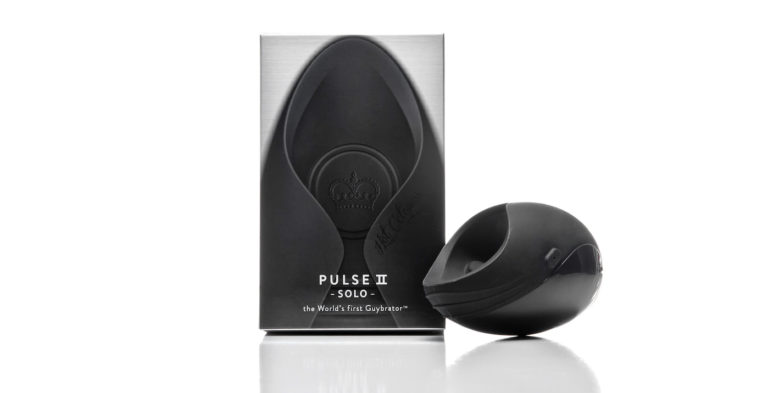Over the past few decades, the federal government has sunk millions of taxpayer dollars into abstinence programs and interventions which have yet to be proven effective. Stopping teen pregnancy, the spread of HIV and other sexually transmitted diseases among youth takes much more than a pledge, purity ring or a bogus abstinence message that only focuses on delaying sex until marriage.
Now don’t get me wrong, abstinence works well if you use it! But reality and statistics show that kids just don’t. It’s time to get real about abstinence messages and explore the reasons why they continue to fail our children.
Sex is Natural
Teenage hormones are real. When human beings discover the joy of sex and orgasm, it’s a impossible to stop that desire in its tracks and reverse the pursuit of pleasure. In fact, as young sexual beings, the pursuit of pleasure supersedes our rational mind, and the desire to orgasm clouds our common sense! We are sexual beings from the time we are born until we die. The desire to explore our sexuality is as natural as the desire to eat or sleep. These desires are embedded deep within our subconscious and begin much earlier in life than puberty. Curiosity surrounding sexuality is a natural part of development beginning with the exploration of the body. Teaching abstinence is like asking someone to stop eating or sleeping.
Peer Pressure is Real
Peer pressure is a hallmark of the adolescent experience. The desire to fit in during teen years can be overwhelming! No matter how influential you and other trusted adults are in children’s lives, their friends’ thoughts and opinions will weigh heavily on their decision making, including the decision to have sex. According to research conducted by the Kaiser Family Foundation, the majority of children in the U.S. ages 13-18 reported that they get a lot of their information about sexuality from their peers. The report also found that one of the biggest reasons that they engage in sexual activity is because they believe that their peers are also having sex. No amount of saying “just don’t” is going to convince them that shouldn’t keep up with their peers.
The Media Sells Sex
The media perpetuates specific social scripts and conceptual frameworks about sexuality. Television, magazines, movies, and music continue to shape thoughts, beliefs, and attitudes about how men and women should behave sexually, promoting the “player” status for men, and “using what you’ve got to get what you want” for women. The Real Housewives, Love & Hip Hop, The Bachelorette – just to use a few examples – are all filled with the same old narrative featuring unhealthy relationships, lack of meaningful friendships, low self-esteem, and overt sexuality as a tool or a weapon. There are very few healthy sexual dynamics presented in the media for teens to look up to and admire, and shows aimed at kids are so chaste and abstinence-assuming, that issues surrounding sexual peer pressure are avoided like the plague.
Social Media Has Opened Pandora’s Box!
Children have a natural curiosity when it comes to sexuality. Google, Facebook, Instagram, Snapchat, Twitter and all the other social media sites have increasingly become the primary source of sex education and information. Children are turning to the internet instead of parents or trusted adults, to answer their questions about sexuality. Unfortunately, the accuracy and reliability of the internet is, at best, questionable. Searching for sex education websites online can result in inaccurate information, and at worst, redirects to pornography which is massively inappropriate as a sex education tool, showing no emotional context or basis for intercourse.
The Church Sends Mixed Messages
Most churches preach one thing: refrain from sex until marriage. But churchgoers are human and you can bet that pretty much everyone in the congregation is engaging in some form of “sinful” sexual activity. There is also often a focus on female shame, where pregnant young women need to admit their her sins of fornication before the church, while the male partner does not, sending the message that only women bear the burden of sexual ‘sin’. It’s long established that religious guilt-tripping and sin shaming isn’t very helpful. It teaches children to lie, hide and be ashamed of their own sexuality, a silence that puts children at risk. When we silence them for speaking about sexuality beyond abstinence, we miss an opportunity to save their lives, or improve them.
Fear-Laden Messages Don’t Work!
Showing pictures of sexually transmitted infections or telling children that they’ll go blind if they have sex are fear-based tactics that have adverse effects. Categorizing sex as dirty and nasty, or something only bad people do, sends the message that embracing your sexuality is wrong. Not only that, it teaches intolerance for sexual diversity among the beautiful spectrum of sexuality. As a result, kids carry these unhealthy messages into adulthood and they play out in the form of unhealthy relationships, low self-esteem, depression, domestic violence, substance abuse and so much more! In addition, because the teen brain is less developed than an adult’s, they lack the biological mechanism to properly determine the possible negative outcomes of a certain action. So often times they live with a false sense of security and take risks because “it’s not going to happen to me,” or “I’m invincible.”
Do as I say and not as I do
The unspoken messages from adults regarding sexuality are oftentimes more powerful than their spoken messages in shaping children’s perception of sexuality. The behaviors adults model to children can have a significant impact on the choices they make, how they view things and even how they behave or not behave. Parents, it’s time to lead by example! If you want to send the message of abstinence, then perhaps you need to do the same? Or if you want to send a message of healthy safer sex with emotional attachment, practice that! Or if you want to sleep around, but don’t want that for your teenage daughter, you need to have that discussion too.
Penis Play Equals Notches!
Boys are socialized from a very early age to embrace their penis. They are encouraged to sow their oats and have as much sex as one man can have. This message has been passed down as if it’s a rite of passage. Society supports a very unhealthy and sometimes misogynistic view of women, relationships and sexuality, as the recent ‘locker room banter’ political discussion has proven. All these things combined create an unhealthy framework of male sexuality that promotes promiscuity, shuns abstinence, and misses out on important discussions about relationship building and intimacy.
Keep Your Panties up!
This antiquated adage gets an epic fail. How can boys be promiscuous while girls are abstinent? It doesn’t make sense, and it contributes to shame and dangerous secrecy. Back in the day, it created confusion and resentment from kids who grew up to find that their “big sister” was really their mother and other complicated scenarios arising from lies, and currently it’s wreaking havoc on young women all over the country, resulting in damaged wombs or infections from back alley abortions, and of course deep emotional scarring.
So, You Want an Abstinence Message That Works?
We need to rethink, reframe and replace the current abstinence message with one that offers an integrated approach. It must be developmentally appropriate, medically accurate, gender considerate, culturally competent. The message must be clear, concise and consistent and teach knowledge, tools and skills. In addition, effective abstinence programs must including the following:
- Teaching what it truly means to abstain, including abstain from substances
- Teaching how to choose abstinence – even after being sexual
- Teaching that the body is a temple that needs to be protected
- Identifying sexual triggers
- Understanding peer pressure and establishing healthy friendship
- Setting personal boundaries
- Defining the characteristics of a healthy relationship
- Teaching about informed consent
- Teaching communication skills
- Teaching critical thinking skills
- Teaching decision making skills
- Teaching negotiation and conflict resolution skills
- Identifying how morals, values and beliefs influence sexuality
Discussing the mental, emotional, social, spiritual, physical, biochemical, energetical, political, institutional, legal, systemic and financial consequences of sexuality
Finally, parents and other trusted adults who have chosen the abstinence talk must continue the abstinence talk. It is not a one-time discussion. The abstinence talk is an ongoing evolving discussion that changes with the needs of the child.
It can be scary to talk to your teen about sex. However, we live in a world where not teaching your child about sexuality can be even more frightening! We must acknowledge that an abstinence-only message is not working. We have to create a message that prepares them for life by acknowledging the truth that children are indeed having sex!


























![Digital-Indiscretions-part-3-by-Dr.-Ebony-Utley[1]](https://www.sexpert.com/wp-content/uploads/2015/09/Digital-Indiscretions-part-3-by-Dr.-Ebony-Utley1.jpg)


















